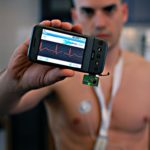“Consumer mhealth devices that have been increasingly hyped since 2010 will hit a wall as the next decade progresses,”Lux forecasts in a new report.
In the future, only those companies that develop “high-value sensor solutions” and can “pivot to clinical applications will be able to weather” some “sluggish market conditions” for consumer products ahead, according to its 18-page proprietary report, mHealth Showdown: Consumer and Clinical Devices’ Battle for Market Dominance.
In 2013, the overall market for vital signs monitoring applications for mobile devices was $2.8 billion, a figure expected to balloon to $23 billion in 2023, using its “moderate” growth scenario, Lux reports.
Of that, the market for high-end, clinical monitoring devices will jump from $372 million in 2013 to $16 billion, with clinical applications catching and surpassing consumer applications in 2021.
Some of the larger medical-device makers already are tuned in to this trend, Lux notes. Covidien and Intel recently bought some of the earliest innovators in the clinical and consumer spaces.
Covidien itself became an acquisition target last month, agreeing to a $42.9 billion offer from Medtronic.
“In general, mhealth devices are greatly over-hyped right now, particularly consumer devices,” said Nick Kurkjy, a research associate at Lux, and the lead analyst for the report. “The reason why clinical devices are really going to blow away consumer devices in a decade or so (is) there is so much more value to be had in a clinical setting. Outcomes-based reimbursement and a focus onreadmissions is going to really drive this,” he said.
“If a vital signs device can help a provider reduce recovery times or decrease readmission rates, that’s so much more valuable for a healthcare provider or for a payer and for the patient, compared to helping you lose weight,” Kurkjy said.
“It’s great to know how many steps you’ve walked, but to be able to take your heartbeat or blood glucose levels or more elaborately, do an analysis of a EEG signal, (these) clinical settings are where the value of an mhealth device are realized,” Kurkjy said.
“If that data is going to be put back into an algorithm that automatically makes decisions, that’s a regulated clinical product,” he said. “If you have to go through the FDA regulatory process, you’re a clinical device and you have to raise your price to pay for” it.

